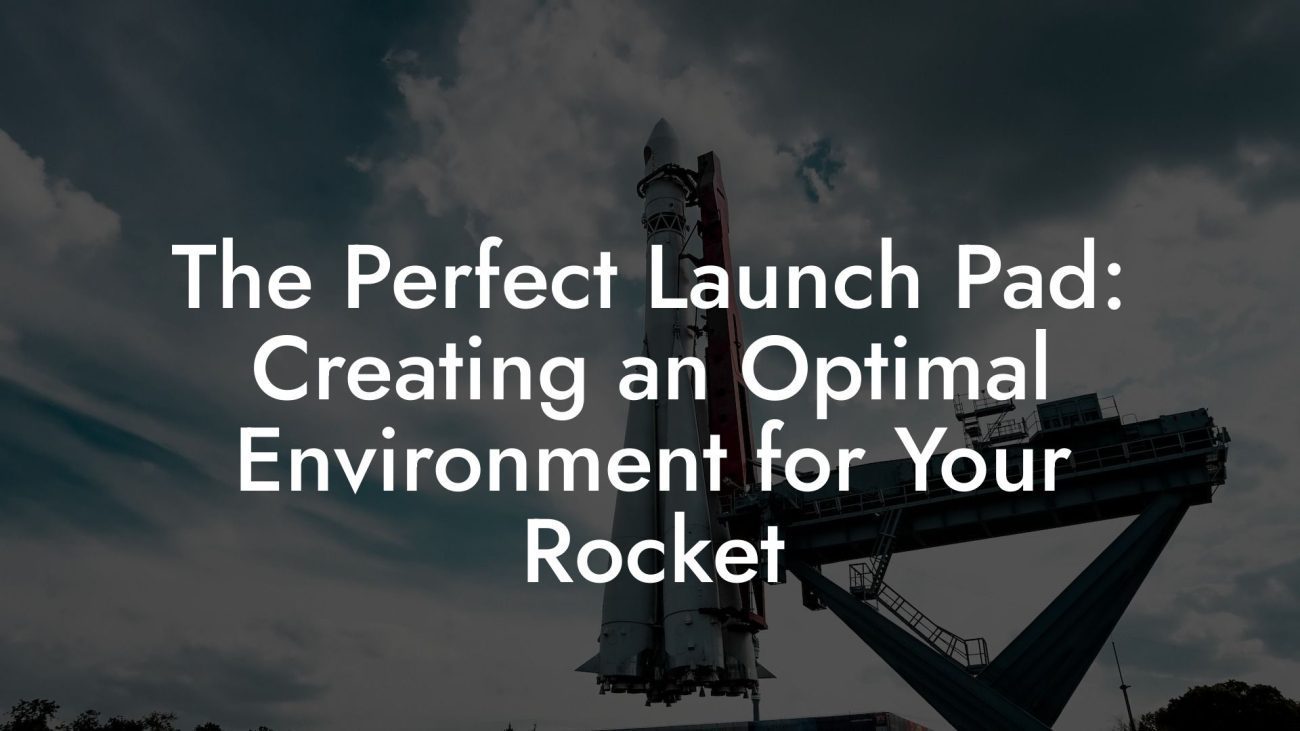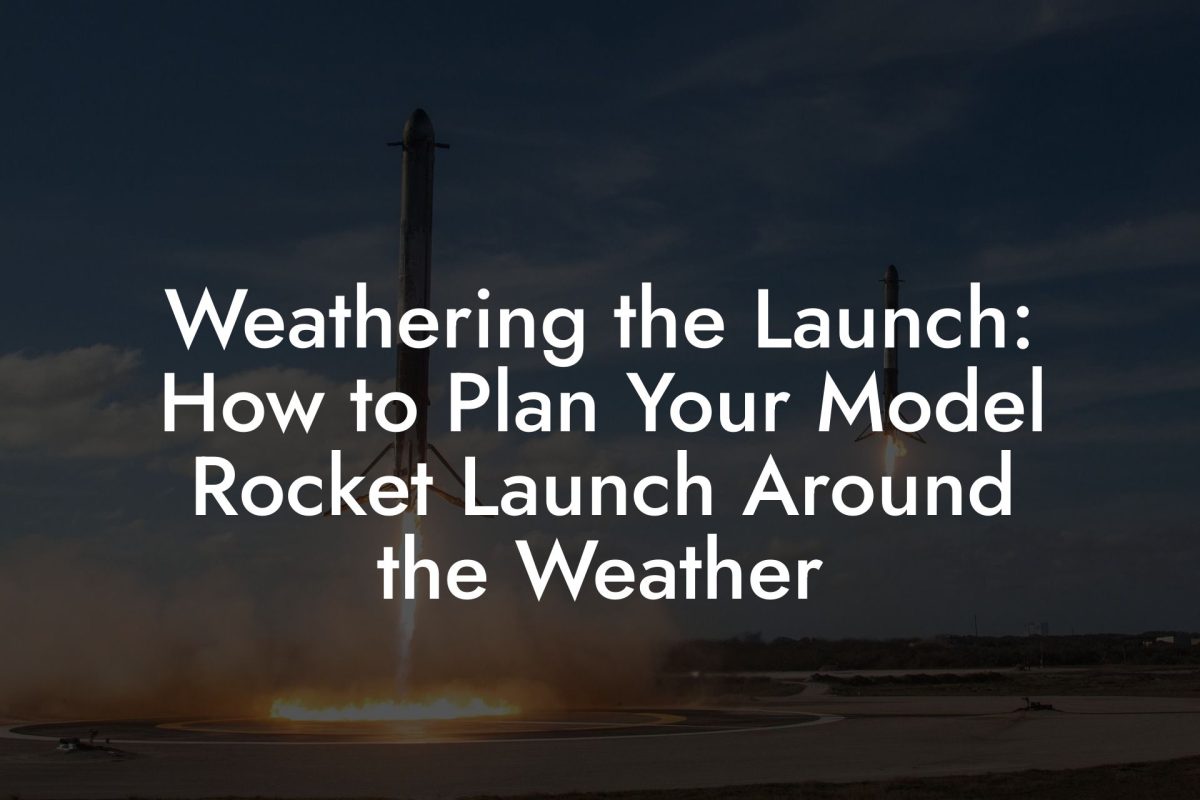From the tense moments of final checks to the exhilarating burst of liftoff, mastering model rocket launch techniques transforms a simple flight into a triumphant journey from ground to glory. Whether you’re a beginner honing your skills or a seasoned enthusiast chasing perfection, this guide is your launchpad to a flawless takeoff. Get ready to learn the art of timing, precision, and safety that propels your rocket, and your passion, into the stratosphere.
Quick Links to Useful Sections
- Introduction: The Thrill of Liftoff
- Pre-Launch Preparation: Laying the Groundwork for Success
- Develop a Detailed Pre-Launch Checklist
- Setting Up Your Launch Pad: The Foundation of a Great Flight
- Choosing the Right Location
- Constructing a Sturdy Base
- Integrating Launch Equipment
- The Countdown: Creating a Controlled Launch Sequence
- Establishing a Clear Countdown Protocol
- Performing Final System Checks
- Ignition and Liftoff: The Moment of Truth
- Executing the Launch
- Monitoring Initial Ascent
- Recovery and Post-Launch Analysis: Learning from Every Flight
- Ensuring a Successful Recovery
- Documenting Flight Data
- Team Debrief
- Advanced Launch Techniques: Taking Your Skills to the Next Level
- Multi-Stage Launches
- Using Digital Data Loggers
- Wind Compensation Strategies
- Model Rocket Launch Techniques & Recovery FAQs
- Your Next Launch: Soar with Confidence and Achieve Liftoff Glory
Introduction: The Thrill of Liftoff
Launching a model rocket is much more than pressing a button, it’s an orchestration of careful planning, technical know-how, and a bit of courage. The perfect launch technique can transform a routine flight into a spectacle of power and grace. In this guide, we’ll break down each phase of the launch process, from pre-launch preparation to the moment of ignition, so you can ensure that every launch is as spectacular as it is safe.
Whether you’re setting up your first backyard launch or refining your approach for competitive events, understanding and mastering launch techniques is key to turning your model rocket dreams into reality.
Pre-Launch Preparation: Laying the Groundwork for Success
The journey to a flawless liftoff begins long before the countdown starts. Meticulous pre-launch preparation is the cornerstone of every successful flight. By planning ahead and double-checking every detail, you can prevent many common issues that disrupt a launch.
Develop a Detailed Pre-Launch Checklist
Create a comprehensive checklist that covers every aspect of your launch day:
Looking For The Best Model Rocket Kits? You'll Love These:
- Rocket Inspection: Verify that all components, engine, fins, recovery system, and body, are securely attached and in optimal condition.
- Launch Pad Setup: Ensure the pad is level, stable, and free from debris. Confirm that safety barriers are in place and the launch controller is fully functional.
- Weather Assessment: Use weather apps and portable wind meters to confirm ideal conditions. Adjust your schedule if conditions are marginal.
- Team Briefing: If launching with others, review roles, communication signals, and emergency procedures. A coordinated team is key to a smooth launch.
A well-prepared checklist not only minimizes errors but also instills confidence as you approach launch day.
Setting Up Your Launch Pad: The Foundation of a Great Flight
A secure, well-designed launch pad is vital for a successful liftoff. It not only provides the physical support your rocket needs but also ensures safety for everyone involved.
Choosing the Right Location
Select an area that is flat, open, and free of obstacles. Ideally, the launch pad should be set up in a space where you can safely control access and monitor weather conditions.
Constructing a Sturdy Base
Whether you’re using a commercial launch pad or building your own, ensure that your platform is stable. Materials like treated wood, metal, or even concrete can provide a reliable foundation. Secure the pad with proper anchoring, and verify that it remains level under all conditions.
Integrating Launch Equipment
Mount your launch controller securely and route wiring safely away from the launch area. Setting up clear safety barriers and marked perimeters will help ensure that spectators and crew remain at a safe distance during ignition.
The Countdown: Creating a Controlled Launch Sequence
The countdown is the final opportunity to ensure that everything is in order before ignition. It’s both a technical procedure and a moment of anticipation that signals the transition from preparation to action.
Establishing a Clear Countdown Protocol
Use a consistent and audible countdown sequence that everyone on your team can follow. A typical countdown might look like this:
- "10, 9, 8... 3, 2, 1, Launch!"
This sequence not only builds excitement but also ensures that each team member is alert and ready to respond to any last-minute issues.
Performing Final System Checks
During the countdown, do a final visual and technical inspection of the rocket and launch pad. Confirm that the engine is secure, the fuel is in good condition, and the recovery system is properly set up. This is the last chance to catch any anomalies before liftoff.
Ignition and Liftoff: The Moment of Truth
The ignition sequence is the culmination of all your hard work, a split second that sends your rocket soaring upward. When the engine ignites, you should see a clean, robust burst of flame and smoke as the rocket accelerates away from the pad.
Executing the Launch
With the countdown complete and all systems checked, initiate the launch using your electronic controller. Stand back and observe the ignition. A successful launch will feature a smooth, vertical liftoff with consistent thrust.
Monitoring Initial Ascent
As your rocket climbs, keep an eye on its trajectory and stability. Watch for any deviations that might indicate a misalignment or a potential malfunction. Immediate observation allows you to adjust your approach for future launches.
Recovery and Post-Launch Analysis: Learning from Every Flight
The journey from ground to glory doesn’t end at liftoff, the recovery phase is just as critical. A well-executed recovery system ensures that your rocket is safely retrieved and ready for its next mission.
Ensuring a Successful Recovery
Verify that your recovery system (whether it’s a parachute, streamer, or hybrid system) deploys correctly after engine burnout. Monitor the descent to ensure that the rocket slows down adequately before landing.
Documenting Flight Data
After the rocket has landed, take time to document its performance. Record details such as flight duration, altitude, recovery performance, and any anomalies observed during launch. This data is invaluable for troubleshooting and continuous improvement.
Team Debrief
Gather your team to review the launch. Discuss what went well, what could be improved, and any unexpected challenges. Use this feedback to refine your checklist and upgrade your techniques for future launches.
Advanced Launch Techniques: Taking Your Skills to the Next Level
Once you’ve mastered the basics, you might be ready to explore advanced launch techniques that can further enhance your model rocket’s performance:
Multi-Stage Launches
Experiment with rockets that use multiple stages to achieve higher altitudes. Multi-stage launches require precise timing and synchronization between stages, offering a challenging yet rewarding experience.
Using Digital Data Loggers
Integrate digital sensors and data loggers to capture real-time flight data such as altitude, acceleration, and engine performance. This information allows you to fine-tune your launch techniques with scientific precision.
Wind Compensation Strategies
Develop strategies to compensate for windy conditions, such as adjusting your rocket’s center of gravity or modifying fin configurations to maintain stability during ascent.
Advanced techniques like these can transform your launches into highly refined, repeatable performances.
Model Rocket Launch Techniques & Recovery FAQs
Here are some frequently asked questions to help you troubleshoot and perfect your launch process:
1. What is the most critical step in launch preparation?
The most critical step is thorough pre-launch planning and checklist verification, ensuring that all components of your rocket and launch pad are in perfect working order.
2. How important is site selection for a successful launch?
Site selection is vital. A flat, open area with minimal obstacles greatly enhances launch stability and recovery success.
3. What should I look for during the final inspection of my rocket?
Ensure that the engine is securely mounted, the recovery system is properly packed, and all structural components, like fins and body tubes, are firmly attached and aligned.
4. How can I mitigate the effects of wind on my launch?
Adjust your rocket’s design for increased stability, use wind meters to monitor conditions, and postpone the launch if wind speeds exceed your safety thresholds.
5. What are the benefits of using digital data loggers?
Digital data loggers provide real-time performance data, allowing you to analyze flight metrics and make informed adjustments to improve future launches.
6. How do I ensure my recovery system deploys correctly?
Follow the manufacturer’s guidelines for packing and deploying the recovery system, and perform test deployments if possible before the actual launch.
7. What is the best way to document a launch?
Keep a detailed launch log that includes weather conditions, flight data, and observations of any anomalies. This documentation is essential for continuous improvement.
8. Can I use a manual launch method instead of an electronic controller?
While manual methods are possible, electronic launch controllers provide greater precision and safety by allowing remote ignition and controlled countdowns.
9. How critical is team communication during a launch?
Effective communication is crucial. A well-coordinated team can quickly address any issues, ensuring that every launch proceeds safely and smoothly.
10. What common mistakes should be avoided during a launch?
Avoid rushing the pre-launch checklist, neglecting weather assessments, and overlooking the proper setup of the recovery system. Meticulous preparation is key.
Your Next Launch: Soar with Confidence and Achieve Liftoff Glory
With your launch pad perfectly set up, your pre-launch checklist meticulously completed, and a team that’s ready to communicate and coordinate, you’re now equipped to master the art of model rocket launching. Each launch is an opportunity to refine your techniques, learn from your experiences, and ultimately reach new heights.
Embrace the thrill of liftoff, trust in your careful preparations, and let your rocket soar with the glory of a launch well-executed. The sky is the stage, it's time to step into the spotlight and take flight with confidence and precision.
Looking For The Best Model Rocket Kits? You'll Love These:
Useful Interruption: Dive deeper into the world of Model Rockets with our most popular sections. If there is anything you think is missing or anything you would love for us to write about, just give us a shout.
- Getting Started & Basics With Model Rockets
- Model Rocket Design, Build & Customization
- Model Rocket Propulsion & Engine Technology
- Model Rocket Launch Techniques & Recovery
- Model Rocket Advanced Rocketry & Innovations
- Model Rocket DIY and Customization
- Model Rocket Equipment Reviews & Digital Tools
- Community, Competitions & Education
- Model Rocket Troubleshooting & FAQs
- Model Rocket Bonus/Seasonal & Niche Topics
A group of model rocket enthusiasts gathered at a field for their weekly launch event. Among them was Dave, a seasoned builder known for pushing the limits of hobby rocketry. This time, he had outdone himself.
“Ladies and gentlemen,” Dave announced, dramatically pulling a cloth off his latest creation, “I present to you: The Kraken!”
The crowd gasped. This wasn’t just a model rocket, it was a monster. The thing stood 8 feet tall, had six clustered engines, and was covered in enough duct tape to qualify as a classified aerospace project.
“Dave,” muttered Steve, the cautious safety officer, “Have you, uh… done the math on this?”
“Math?” Dave scoffed. “I built it in my garage at 3 a.m. with parts from eBay. This is an art piece, Steve.”
The countdown began.
5…
4…
3…
2…
1…
The engines ignited with a BOOM, and The Kraken shot up… kind of. It immediately did a violent barrel roll, narrowly missing the spectators before skyrocketing at an angle that could only be described as “legally questionable.”
The crowd collectively ducked as The Kraken flew straight over the adjacent cornfield, where Old Man Jenkins, the grumpiest farmer in town, was minding his business.
KABOOM!
The rocket disappeared behind the barn. A moment later, a flaming piece of Estes igniter wire landed at Steve’s feet. The silence was deafening.
And then, an unmistakable sound echoed across the field.
Jenkins’ shotgun being cocked.
“DAVE!!!” Steve shouted. “RUN.”
And that was the day Dave invented the first-ever biologically powered rocket booster: pure adrenaline.
To this day, nobody knows where The Kraken landed, but legend has it, it still haunts the skies, terrifying unsuspecting drones and low-flying birds.










